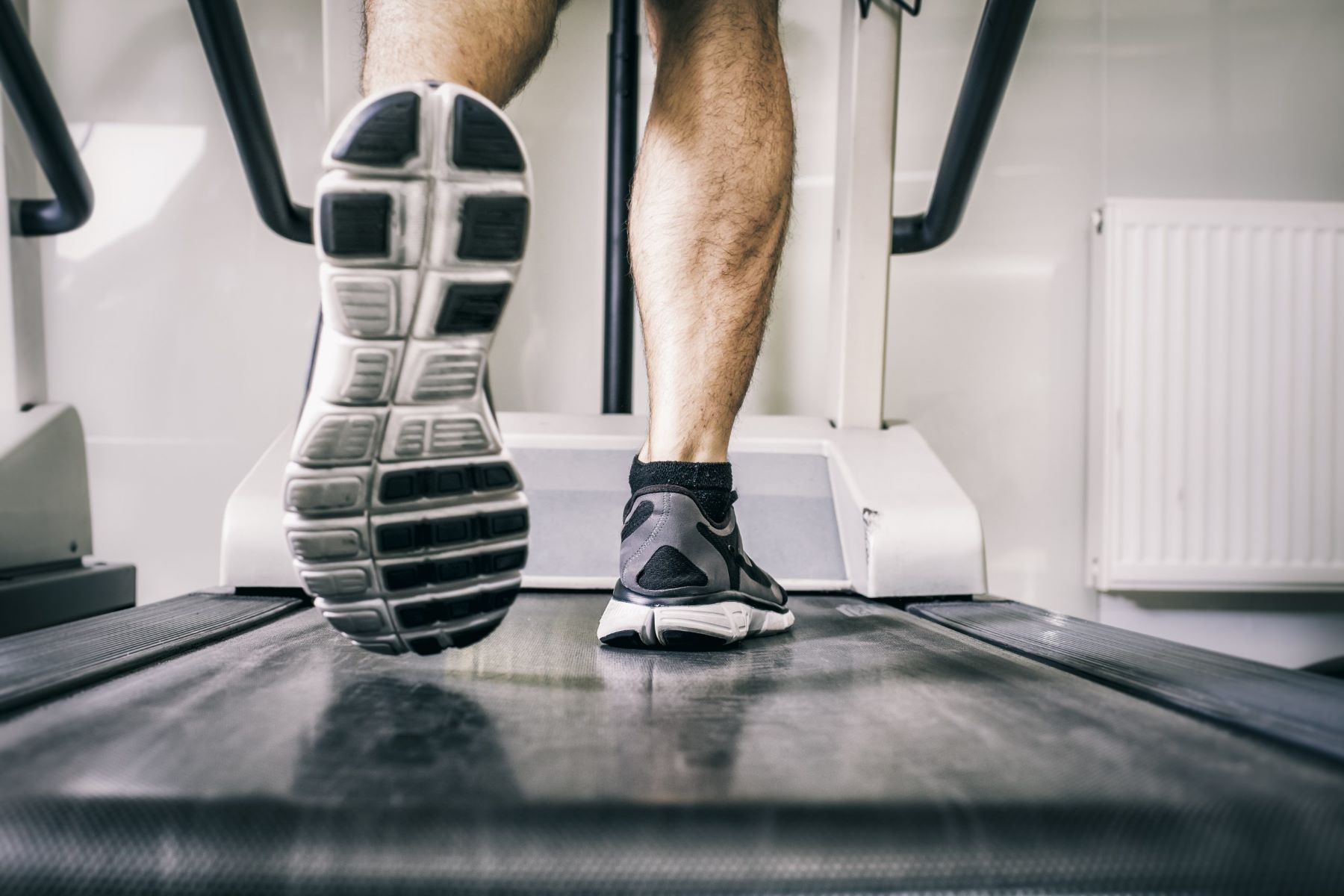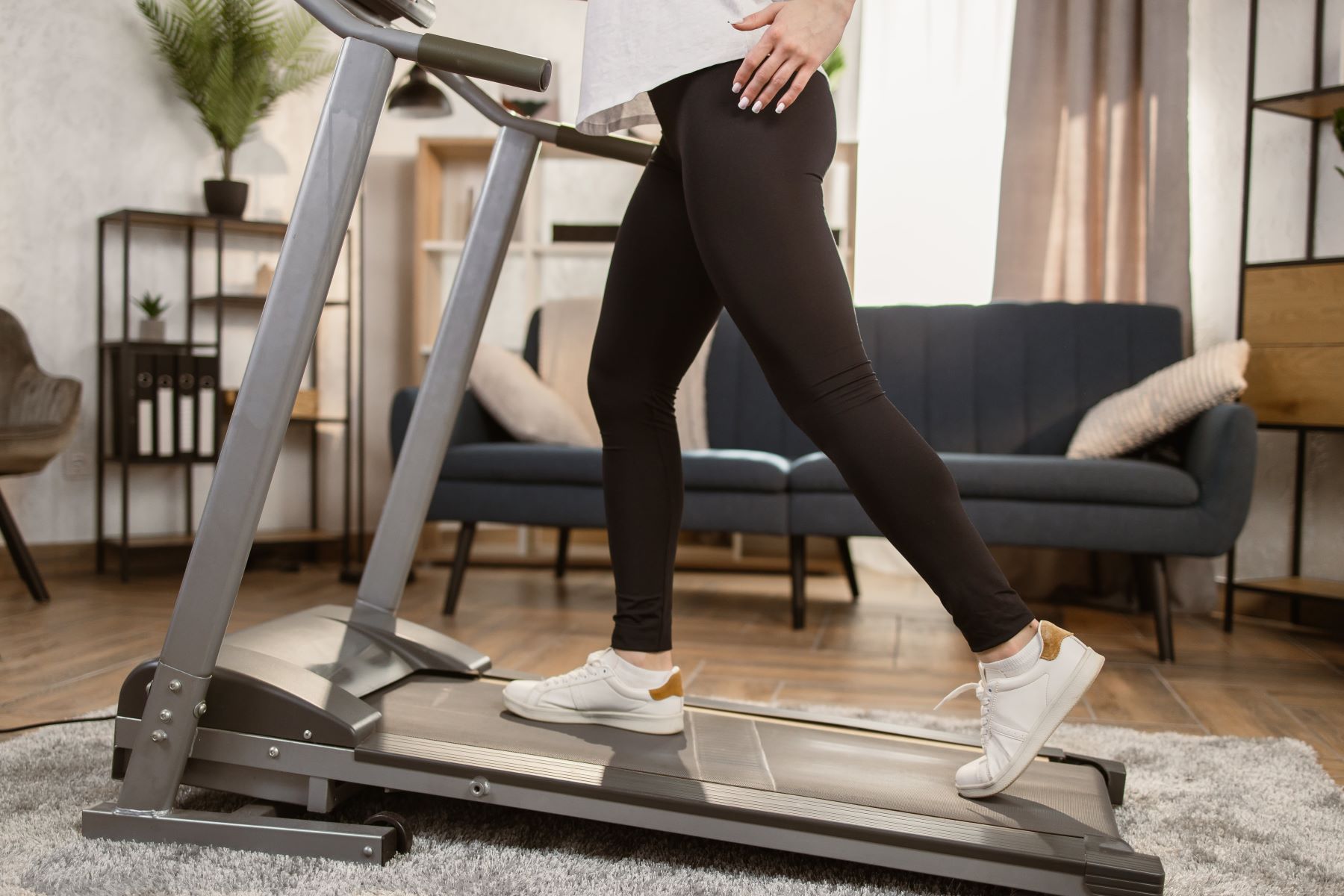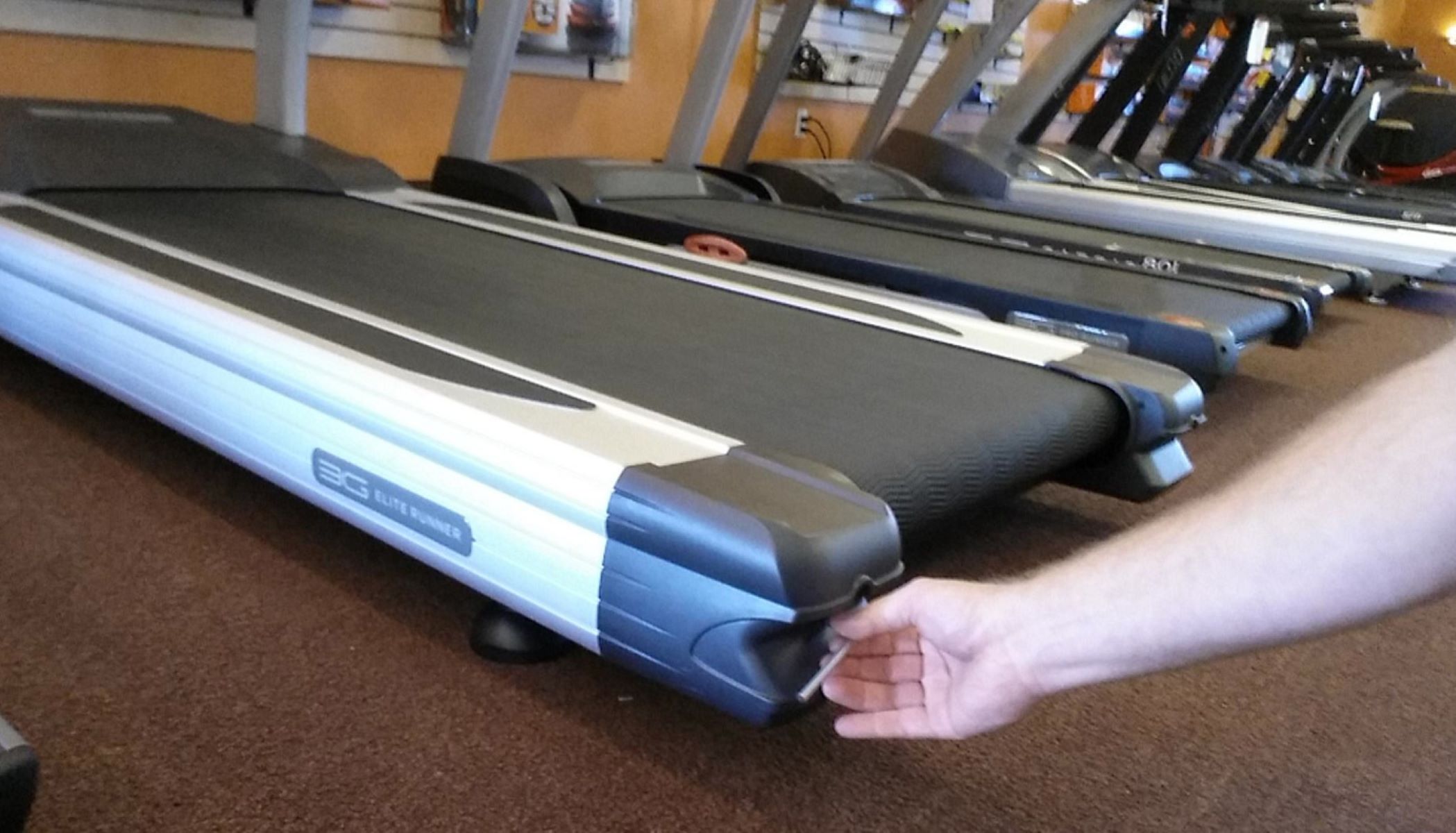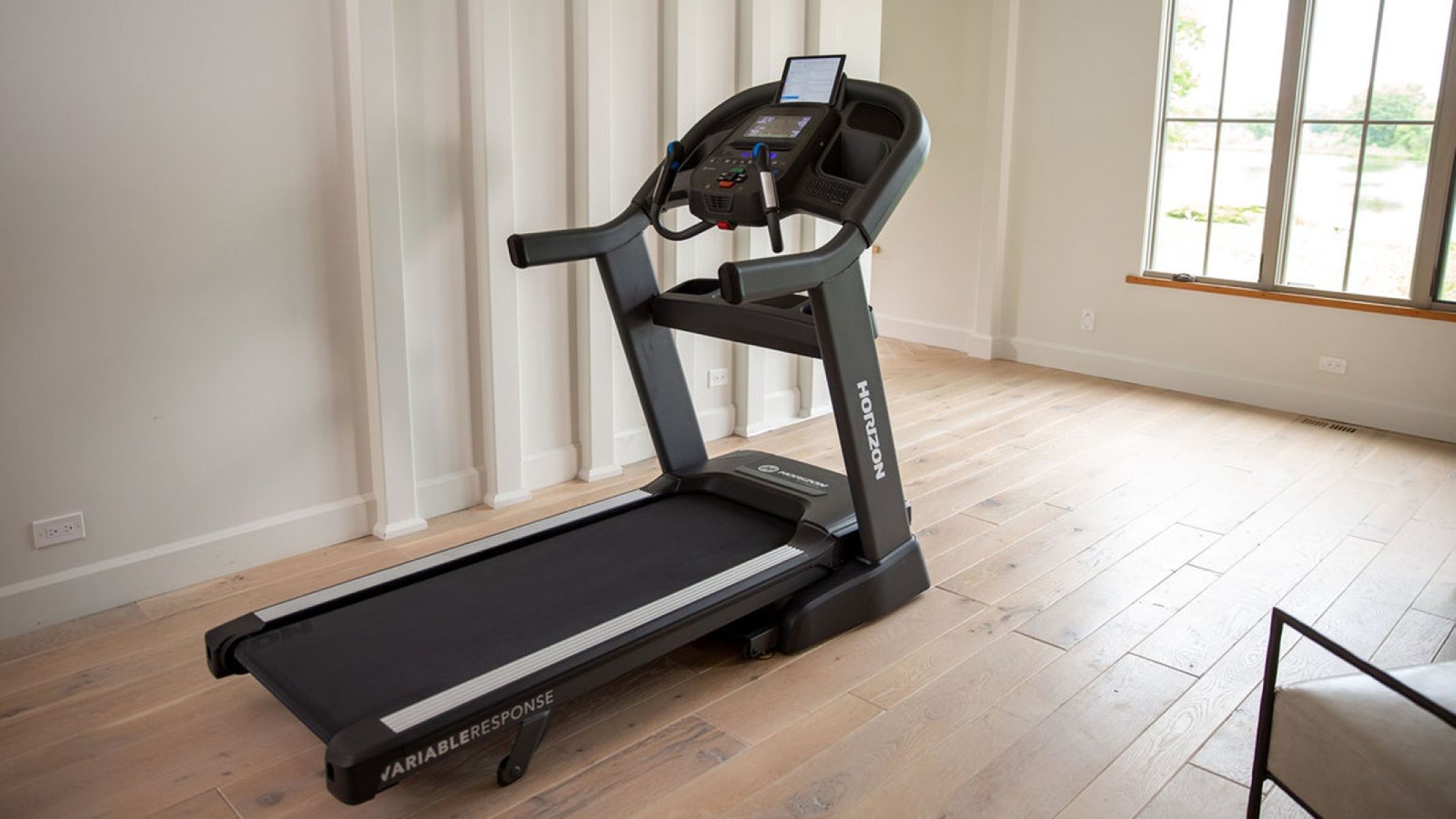Home>Misc>Featured>What Happens If You Use A Treadmill Over The Weight Limit


Featured
What Happens If You Use A Treadmill Over The Weight Limit
Modified: January 2, 2024
Discover what happens when you use a treadmill beyond its weight limit and the potential risks involved. Stay informed with our featured article.
Introduction
Welcome to the world of fitness, where treadmills serve as an essential tool for cardiovascular workouts. Treadmills offer a convenient and efficient way to burn calories, improve endurance, and keep our bodies in shape. However, it is important to understand that each treadmill comes with its own set of limitations, particularly regarding its weight-bearing capacity.
When purchasing or using a treadmill, it is crucial to pay attention to its weight limit. This specification represents the maximum weight that the treadmill can safely support during operation. Exceeding the weight limit puts both the user and the machine at risk of potential damage and injury. In this article, we will explore the consequences of using a treadmill that surpasses its weight limit and provide insights into viable alternatives for individuals in this situation.
It is important to note that weight limits vary among treadmill models. Some may have a weight limit as low as 200 pounds, while others can safely accommodate users that weigh over 400 pounds. As a responsible user, it is essential to carefully review and adhere to the weight specifications provided by the manufacturer for your specific treadmill.
Now, let’s delve into the potential repercussions of using a treadmill beyond its weight limit and understand why it is essential to respect these limits for the sake of both our safety and the longevity of the equipment.
Understanding Treadmill Weight Limits
Before we explore the implications of exceeding the weight limit on a treadmill, let’s take a moment to understand what this weight limit actually represents. The weight limit of a treadmill refers to the maximum weight that the machine is designed to support safely without compromising its performance or structural integrity.
Treadmill manufacturers determine weight limits based on the materials used in construction, the design of the frame, and the capacity of the motor. These factors collectively contribute to the treadmill’s ability to withstand the stress and impact generated by the user’s weight during exercise.
Exceeding the weight limit places excessive strain on the treadmill’s components, such as the motor, belt, and frame. Over time, this strain can lead to accelerated wear and tear, decreased performance, and potentially catastrophic failure, posing a grave risk to both the user and the surrounding environment.
It is important to recognize that weight limits are set to ensure the safety and longevity of the equipment. Ignoring or underestimating the importance of adhering to these limits not only compromises user safety but also increases the likelihood of requiring costly repairs or necessitating a premature replacement of the treadmill.
Moreover, surpassing the weight limit can also invalidate any warranties or guarantees provided by the manufacturer, leaving you financially vulnerable in the event of any damage or malfunction.
Understanding the weight limit is vital, as it ultimately determines whether a treadmill is suitable for your needs. So, ensure you take the time to carefully review the specifications provided by the manufacturer to make an informed decision before purchasing or using a treadmill.
Potential Consequences of Exceeding the Weight Limit
While the allure of jumping on a treadmill and pushing your limits may be tempting, it is crucial to recognize the potential consequences of exceeding the weight limit. These consequences can manifest in various ways, both in terms of treadmill performance and the safety of the user.
One immediate consequence of surpassing the weight limit is a decline in treadmill performance. The motor may struggle to maintain a consistent speed, leading to erratic or uneven movement of the belt. This can disrupt your workout routine and hinder your ability to achieve the desired intensity or duration of exercise.
Exceeding the weight limit also places excessive stress on the treadmill’s suspension system, which is responsible for cushioning the impact of each stride. A compromised suspension system can not only result in a less comfortable workout but can also increase the risk of joint and muscle injuries due to inadequate shock absorption.
Another significant concern is the increased likelihood of structural damage. The frame of a treadmill is designed to provide stability and support while distributing the user’s weight evenly. However, exceeding the weight limit can lead to an overload on the frame, potentially causing it to bend, crack, or even collapse. Such consequences pose a serious risk of injury to the user and anyone in the vicinity.
Furthermore, using a treadmill beyond its weight limit may cause damage to the belt and the motor. A worn-out or torn belt can create an uneven surface, making it difficult to maintain proper balance during your workout. Additionally, the motor may overheat or fail altogether, leading to costly repairs or the need for a complete replacement.
It is important to highlight that the consequences mentioned here are not limited to the treadmill alone. Excessive stress on the treadmill due to exceeding the weight limit can also impact the stability and balance of the user, increasing the risk of falls and potential injuries.
Given these potential consequences, it is crucial to respect the weight limit of your treadmill to ensure the safety and longevity of both the equipment and yourself. Now that we have explored the potential repercussions of exceeding the weight limit, let’s move on to understanding the impact on both the treadmill’s structure and the user’s health and safety.
Impact on Treadmill Performance and Safety
Exceeding the weight limit of a treadmill can have a significant impact on both its performance and the safety of the user. Let’s examine these two aspects in more detail.
Firstly, exceeding the weight limit can noticeably affect the performance of the treadmill. The motor, designed to support a specific weight range, may struggle to maintain a consistent speed when overloaded. This can result in the belt slipping or slowing down, making the workout experience less efficient and frustrating.
Moreover, an overloaded treadmill can put excessive strain on the suspension system. This system is responsible for providing cushioning and reducing the impact on the user’s joints while walking or running. When the weight limit is exceeded, the suspension system may become compromised, leading to a less comfortable and potentially harmful workout experience.
Additionally, surpassing the weight limit can lead to increased wear and tear on the treadmill’s components. The belt, for example, may wear out faster and require more frequent replacement. The motor, subjected to higher stress levels, can overheat or burn out, resulting in costly repairs or the need for a new motor altogether.
As for safety, using a treadmill beyond its weight limit poses several risks. One of the most significant concerns is the stability of the treadmill itself. The frame, designed to support a specific weight range, may become unstable or structurally compromised under excessive weight. This could potentially lead to the treadmill collapsing or tipping over, causing serious injury to the user.
Furthermore, an overweight user may find it challenging to maintain proper balance and stability on the treadmill, especially if the belt is slipping or the suspension system is compromised. This increases the risk of falls and potential injuries, such as sprains, fractures, or even head trauma.
It is crucial to prioritize safety when using a treadmill. Adhering to the weight limit set by the manufacturer ensures that the machine can function optimally and reduces the risk of accidents or damage to both the equipment and the user.
In the next section, we will explore the potential risks to the treadmill’s structure when its weight limit is exceeded, shedding light on the importance of staying within the recommended range.
Risks to the Treadmill Structure
Exceeding the weight limit of a treadmill can have significant consequences for its structural integrity. Let’s take a closer look at the potential risks posed to the treadmill’s structure when its weight limit is exceeded.
One immediate risk is the strain placed on the frame of the treadmill. The frame is designed to support a specific weight range, distributing the load evenly to ensure stability during use. However, when the weight limit is exceeded, the frame may become structurally compromised. This can lead to bending, cracking, or even complete failure of the frame, jeopardizing the safety of the user.
In addition, the motor of the treadmill may also be impacted by excessive weight. The motor is responsible for powering the belt and maintaining a consistent speed during a workout. When the weight limit is surpassed, the motor is forced to work harder to accommodate the excess weight. This increased workload puts the motor at risk of overheating or burning out, potentially resulting in costly repairs or the need for a replacement motor.
The belt of the treadmill is another component that can suffer when the weight limit is exceeded. The belt, designed to withstand a specific level of stress, may wear out more quickly under excessive weight. This can lead to premature fraying, tearing, or stretching, affecting the overall performance and safety of the treadmill.
Furthermore, the suspension system, responsible for absorbing the impact of each stride, can become compromised when the weight limit is surpassed. This can lead to inadequate shock absorption, creating an uncomfortable and potentially unsafe workout experience. The user may experience excessive jarring or bouncing, increasing the risk of joint injuries.
Lastly, exceeding the weight limit can also impact the overall stability of the treadmill. When the weight is not evenly distributed within the recommended limit, the treadmill may become imbalanced. This can result in an uneven walking or running surface, making it difficult to maintain proper form and increasing the risk of slips, trips, or falls.
To ensure the longevity and safety of a treadmill, it is crucial to respect the weight limit set by the manufacturer. By doing so, you can avoid the potential risks to the structure, motor, belt, and suspension system of the treadmill, providing a safer and more enjoyable workout experience.
Now that we have explored the risks to the treadmill’s structure, let’s move on to discussing the effects on the user’s health and safety when the weight limit is exceeded.
Effects on User’s Health and Safety
Exceeding the weight limit of a treadmill not only poses risks to the equipment but also has significant effects on the health and safety of the user. Let’s examine these effects in more detail.
One of the primary concerns is the increased risk of joint and muscle injuries. When the weight limit is surpassed, the treadmill’s suspension system may not be able to adequately absorb the impact of each stride. This can result in excessive stress on the joints, leading to conditions such as joint pain, inflammation, or even more severe injuries like sprains or stress fractures.
Furthermore, using a treadmill beyond its weight limit can affect the user’s balance and stability. An overloaded treadmill may have an uneven belt surface or compromised suspension system, making it more difficult to maintain proper form and balance while walking or running. This increases the risk of slips, trips, or falls, which can result in a wide range of injuries, including sprains, fractures, or head trauma.
In addition to physical injuries, there can be psychological effects when using a treadmill that exceeds its weight limit. Individual confidence and self-esteem can be negatively impacted, as users may feel self-conscious or anxious about the stability and performance of the treadmill. These psychological factors can reduce motivation and hinder the user’s ability to enjoy their workout.
Moreover, the discomfort caused by an overloaded treadmill can lead to suboptimal exercise habits or even a complete aversion to using the equipment. Users may experience discomfort in their joints, back, or feet due to inadequate shock absorption or an imbalance in the treadmill’s structure. Over time, this discomfort can discourage regular exercise and hinder progress towards fitness goals.
It is important to emphasize that the effects on health and safety are not limited to the user alone. Exceeding the weight limit increases the likelihood of equipment malfunction or failure, potentially causing injury to the user, as well as to anyone in close proximity to the treadmill.
To prioritize your health and safety, it is crucial to adhere to the weight limit specified by the manufacturer. By doing so, you not only protect yourself from potential injuries but also ensure a more comfortable and enjoyable exercise experience.
Now that we have explored the effects on the user’s health and safety, let’s move on to discussing alternative options for individuals who exceed the weight limit of a treadmill.
Alternatives for Users Over the Weight Limit
If you find yourself exceeding the weight limit of a treadmill, it is important to explore alternative options that can still provide effective and safe cardiovascular workouts. Here are a few alternatives to consider:
- Outdoor Walking or Running: One of the simplest and most accessible alternatives is to take your exercise routine outdoors. Walking or running in a park, on a trail, or around your neighborhood allows you to enjoy fresh air, varying terrain, and the freedom to move without the weight limitations of a treadmill. Ensure you invest in good-quality and supportive footwear to protect your joints.
- Elliptical Machines: Elliptical machines offer low-impact workouts that are gentle on the joints. These machines provide a smooth gliding motion that simulates walking or running without the impact associated with treadmill use. Look for models that have a higher weight capacity to accommodate your needs.
- Stationary Bikes: Cycling on a stationary bike provides an excellent cardiovascular workout while minimizing strain on the joints. Stationary bikes come in various styles, including upright bikes, recumbent bikes, and spin bikes. Choose a model that can support your weight comfortably.
- Rowing Machines: Rowing machines provide a full-body workout and are an excellent alternative for users over the weight limit. Rowing machines offer low-impact exercise that targets multiple muscle groups, improves cardiovascular fitness, and helps in burning calories.
- Stair Climbers: Stair climbers mimic the motion of climbing stairs and provide an effective workout for both the lower body and cardiovascular system. These machines offer an intense workout while reducing the impact on your joints.
- Consult a Fitness Professional: If you are uncertain about the best alternative exercise options for your specific needs, it is highly recommended to consult with a fitness professional. They can evaluate your fitness goals, assess your physical condition, and provide guidance on the most suitable alternative exercises and equipment for you.
Remember, regardless of the alternative exercise option you choose, it is vital to maintain proper form, listen to your body, and gradually increase the intensity of your workouts. Always consult a healthcare professional or a certified fitness trainer before starting any new exercise routine or if you have any specific concerns or medical conditions.
By exploring these alternative options, you can continue to prioritize your fitness goals and maintain an active and healthy lifestyle, even if you exceed the weight limit of a treadmill.
Now that we have discussed the alternatives for users over the weight limit, let’s summarize the key points and conclude our discussion.
Conclusion
Understanding and respecting the weight limit of a treadmill is essential for maintaining both the longevity of the equipment and the safety of the user. Exceeding the weight limit can have detrimental effects on treadmill performance, structural integrity, and user safety.
Using a treadmill beyond its weight limit can lead to a decline in performance, compromised suspension system, and accelerated wear and tear on various components. Additionally, it increases the risk of structural damage, instability, and potential injuries to the user.
It is crucial to prioritize safety by adhering to the weight limit specified by the manufacturer. This ensures that the treadmill can function optimally and reduces the likelihood of accidents or damage to both the equipment and the user. Ignoring or underestimating the weight limit can have costly consequences in terms of repairs or replacement.
For individuals who exceed the weight limit, there are alternative exercise options available. Outdoor walking or running, elliptical machines, stationary bikes, rowing machines, stair climbers, and consulting a fitness professional are all viable alternatives that can provide effective and safe cardiovascular workouts.
Remember, regardless of the exercise alternative chosen, maintaining proper form, listening to your body, and gradually increasing intensity are important. Consulting with a fitness professional can offer personalized guidance and ensure that you choose the most suitable alternative exercises for your needs.
By understanding the implications of exceeding the weight limit, respecting the specifications provided by the manufacturer, and exploring alternative exercise options, you can continue to prioritize your fitness journey while ensuring your safety and the longevity of your chosen exercise equipment.
So, take the necessary precautions, make informed decisions, and enjoy a safe and fulfilling workout experience!









